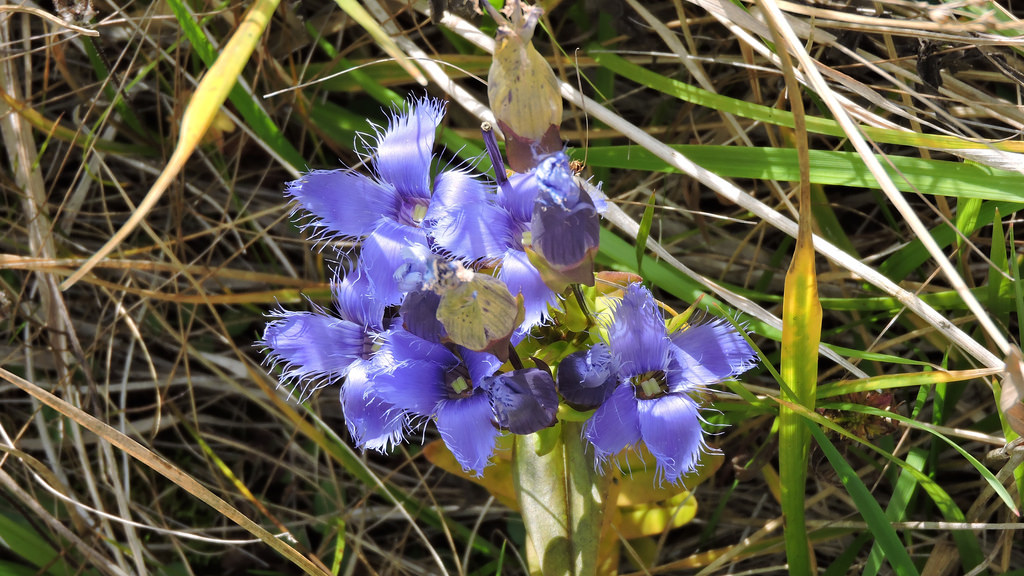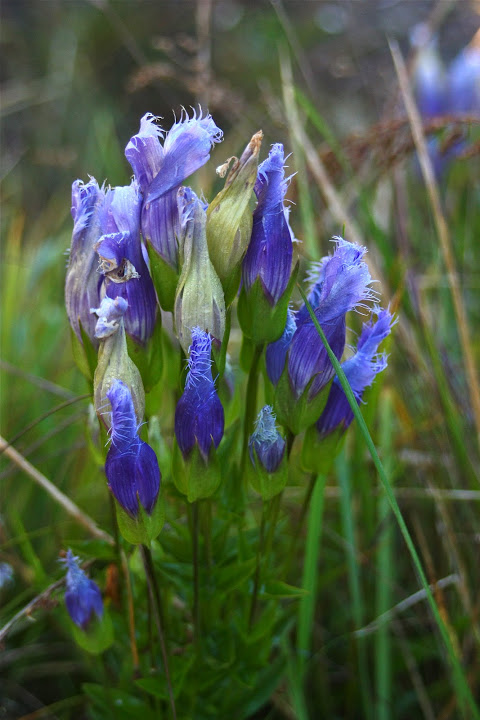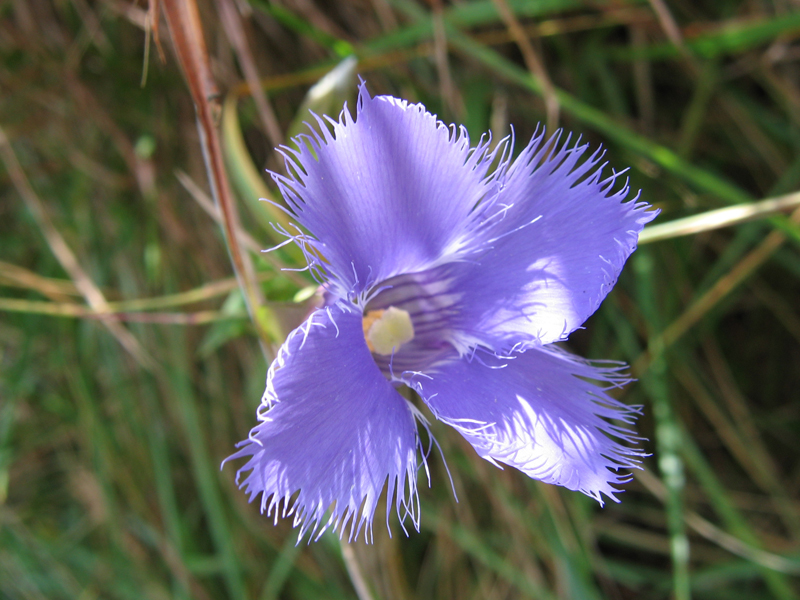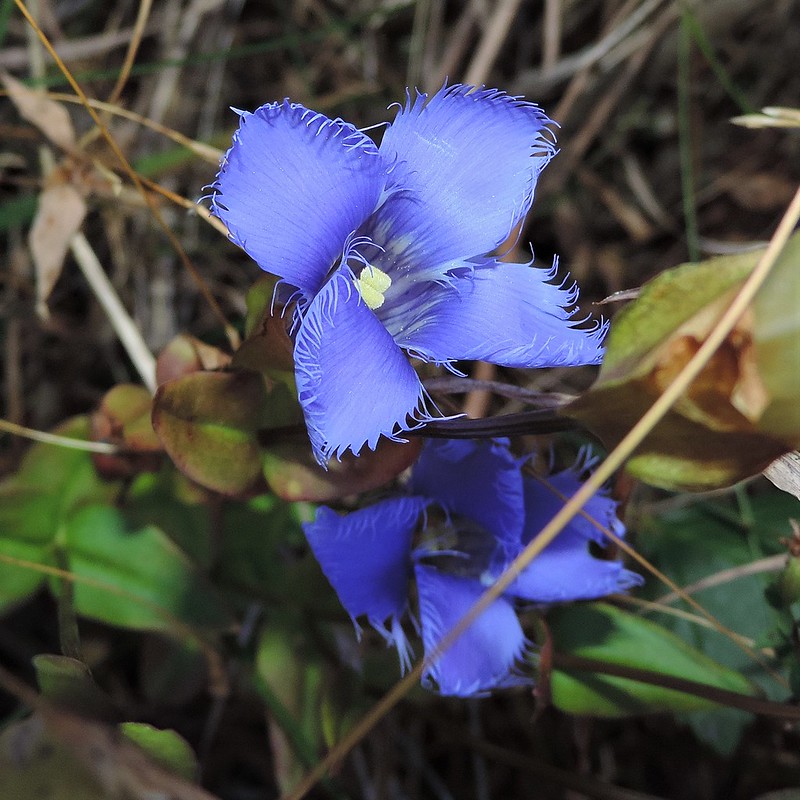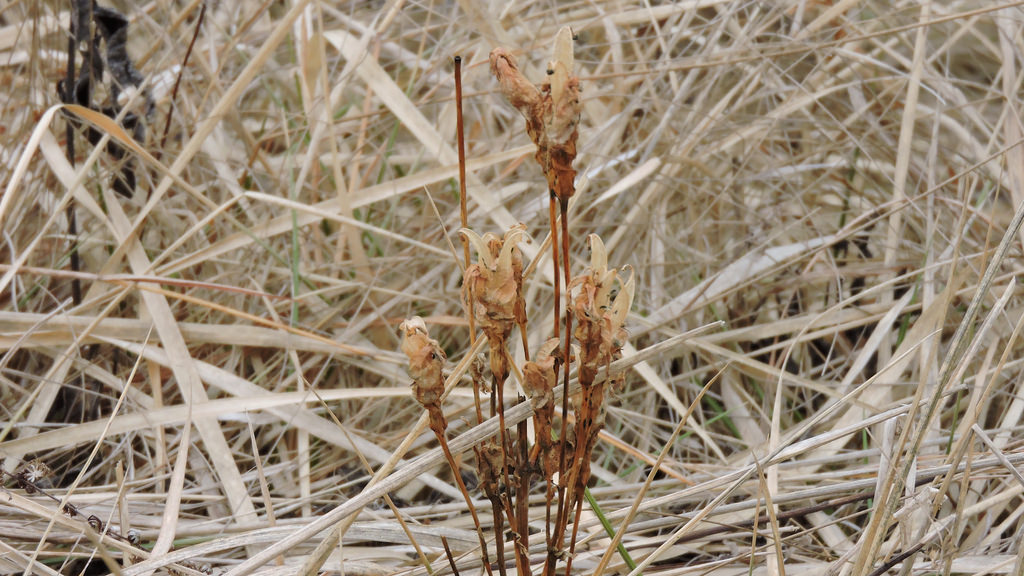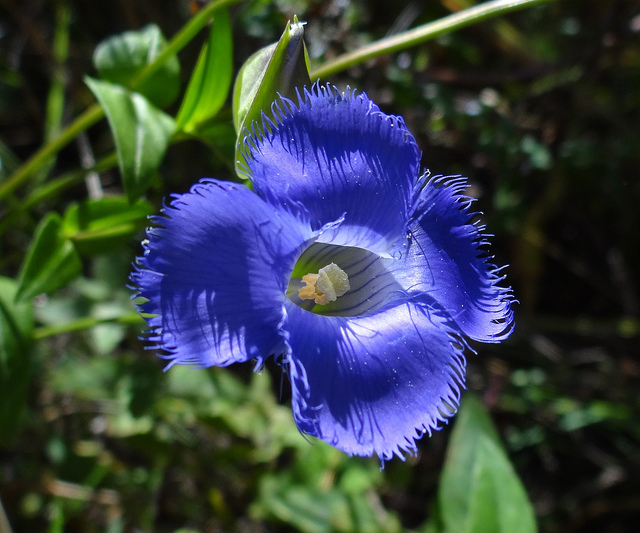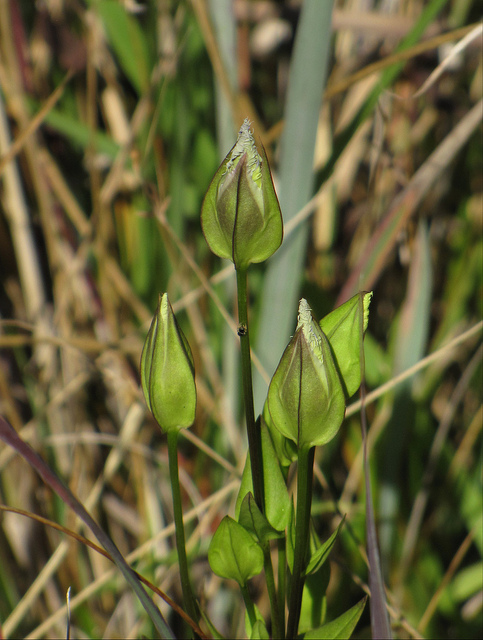Map Snapshot




67 Records
Status
In Maryland, Greater Fringed Gentian is considered highly state rare (S1) and endangered.
Seasonality Snapshot
Source: Wikipedia
| Gentianopsis crinita | |
|---|---|

| |
| Scientific classification | |
| Kingdom: | Plantae |
| Clade: | Tracheophytes |
| Clade: | Angiosperms |
| Clade: | Eudicots |
| Clade: | Asterids |
| Order: | Gentianales |
| Family: | Gentianaceae |
| Genus: | Gentianopsis |
| Species: | G. crinita
|
| Binomial name | |
| Gentianopsis crinita (Froel.) Ma
| |
Gentianopsis crinita (sometimes called greater fringed gentian or blue gentian) is a biennial herbaceous species, native to eastern USA and eastern Canada.[1] The flowers of fringed gentian open on sunny days, but generally remain closed on cloudy days. Individual plants live for only one or two years; the plant is noted as having become relatively rare.[2] It grows in moist, limey woods, meadows, and stream banks.[3]
In autumn, solitary, iridescent blue flowers develop on naked peduncles approximately 2 to 10 cm (3⁄4 to 4 in) in height. Each finely fringed petal is 3.5 to 6 cm (1+3⁄8 to 2+3⁄8 in) in length. The outermost flower parts are two pairs of green sepals, strongly winged and flared on the basal margins, the outer pair much larger than the inner.
It is closely related to Gentianopsis virgata (Raf.) Holub, which is sometimes lumped within a broadly transcribed G. crinita.[4]
According to ancient Roman naturalist Pliny, King Gentius of Illyria found that the roots were useful as an emetic, cathartic, and tonic. From him, the plant's name is derived.[2]
References
[edit]- ^ NRCS. "Gentianopsis crinita". PLANTS Database. United States Department of Agriculture (USDA).
- ^ a b Niering, William A.; Olmstead, Nancy C. (1985) [1979]. The Audubon Society Field Guide to North American Wildflowers, Eastern Region. Knopf. p. 545. ISBN 0-394-50432-1.
- ^ "Lady Bird Johnson Wildflower Center - The University of Texas at Austin". www.wildflower.org. Retrieved 2022-01-13.
- ^ Pringle, J.S. (2004). "Notes on the Distribution and Nomenclature of North American Gentianopsis (Gentianaceae)". Sida. 21 (2): 525–530.
- "The Blue Gentians". Birds and Nature. 8 (3). October 1900. Archived from the original on 2008-11-13. Retrieved 2009-01-14.
